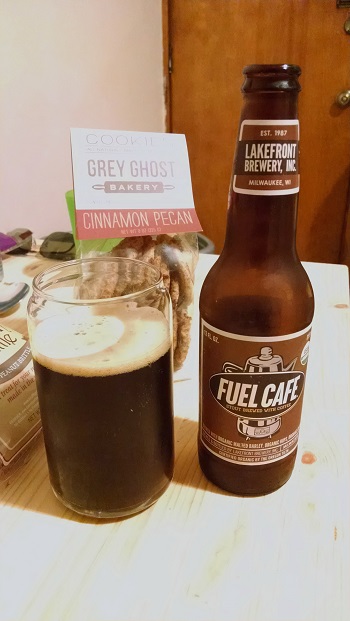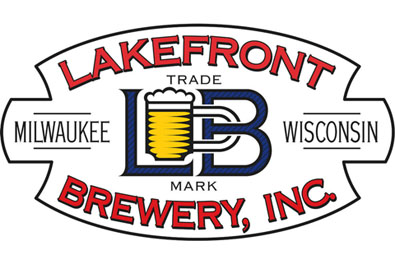Jet Fuel

Brewery and Country of Origin: Lakefront Brewery, Inc. of 1872 North Commerce Street Milwaukee, WI 53212, USA
Date Reviewed: 6-26-15
If you've flown on a commercial flight anywhere in the world since the 1950s and 60s, when airlines were more concerned about passenger comfort than passenger turnover, you're acutely aware that, while there are still some good airlines above our heads, and there are many many terrible ones. Airline travel, as much a necessity as it is in the ever shrinking global economy that we call Planet Earth, is still very much regarded as a luxury which should, and most often is judged as such. And when you're flying cattle car class on US Air, United, or Spirit, whether you're aware of it or not, your comparing that horrific experience with first class on Qatar, Emirates, ANA, Singapore, or Cathay Pacific, even if you've never been on those before. The problem is, that if you know what standards exist in the industry, anything below them sticks out to the consumer like a long distance runner in a body building competition. The good thing about airline travel, is that things have generally improved since the 60s, when air travel really was a genuine luxury. Planes are faster, bigger, more on time, and most importantly, safer. Airports are now mini towns which offer various services and amenities from libraries and lounges, to golf courses, brewpubs, and fancy designer (and of course, overpriced) retail. But perhaps the most visible improvement from a consumer's perspective, is that there's more competition. Back when commercial jet aviation was just getting off the ground, there were basically some no name airlines, Pan Am, or TWA. Today, the airspace is still very much an oligopoly, with international traffic being dominated among US Air, American, Delta, and United, but other airlines, such as Southwest, JetBlue, AirTran, Spirit, Frontier, and many international airlines are forcing the big players to offer what the industry thinks is a market driven ticket price. And that's the thing. Sure, air travel may not be as glamorous or relaxing as it was fifty years ago, but it's certainly cheaper, even if you may not think it is. There are also more destinations, more airports, and more airlines who fly a more diverse fleet of airplanes to choose from. From our own experience, United sucks. US Air may offer free beer and wine in coach (on the Shuttle), but you're just as likely to get bumped from your flight, ticket in hand as you are driving to your destination and beating the often delayed airline. Southwest and JetBlue, on the other hand, are at least most of the time, a decent experience. You'll probably have to fly international to enjoy a flight which brings you back to the day when beds came standard, but you're probably going to need a second mortgage for it. But as it is, you just have to be willing to find out which ones you like for yourself.
The US beer industry is similar in that while the market is still dominated by a few big brands, the past few decades have seen a massive influx in terms of the availability of consumer choice. About 2,000 breweries exist in the US alone, with many more popping up each year. While the introduction of real craft beer in America hasn't really done much to influence the overall price of a 12 oz can of Bud Light, the fact that there are more taps in the bars should make consumers happier. But with better choices also means higher standards. Back when there were only a handful of national domestic airlines, there were also just as few domestic beers: Bud, Coors, Miller and a couple other nondescript choices. What matters though, is that these beers are slowly, but gradually losing market share because consumers no longer think of them as normal beer. Compared to craft beer, the big guys produce crap beer, and while they are currently still heavily outselling any group of microbrews, they've already recognized that they need to transform to keep up with changing consumer demand. Major airlines have merged, purchased newer fleets, offered better fares and offered more direct routes. Big breweries are also being forced to change by buying up known microbrews like Goose Island, or stout from Lakefront. In it's own right, this is a decent beer, but it happens to belong to a strongly represented style which many prominent breweries produce. That's not to say when it comes to a competitive market, you shouldn't bother producing with the big boys, you just better prepare to fly as high and as fast as they do.
Date Sampled: 5-18-15 At: 7 Priscilla Road, Brighton, Boston, MA 02135, USA
Beer Style: American Stout
Alcohol by Volume: 6.40%
Serving Type: 12 oz Bottle, 16 oz Can Stange Glass
Rating: 2.90
 Fuel Cafe
Fuel Cafe



